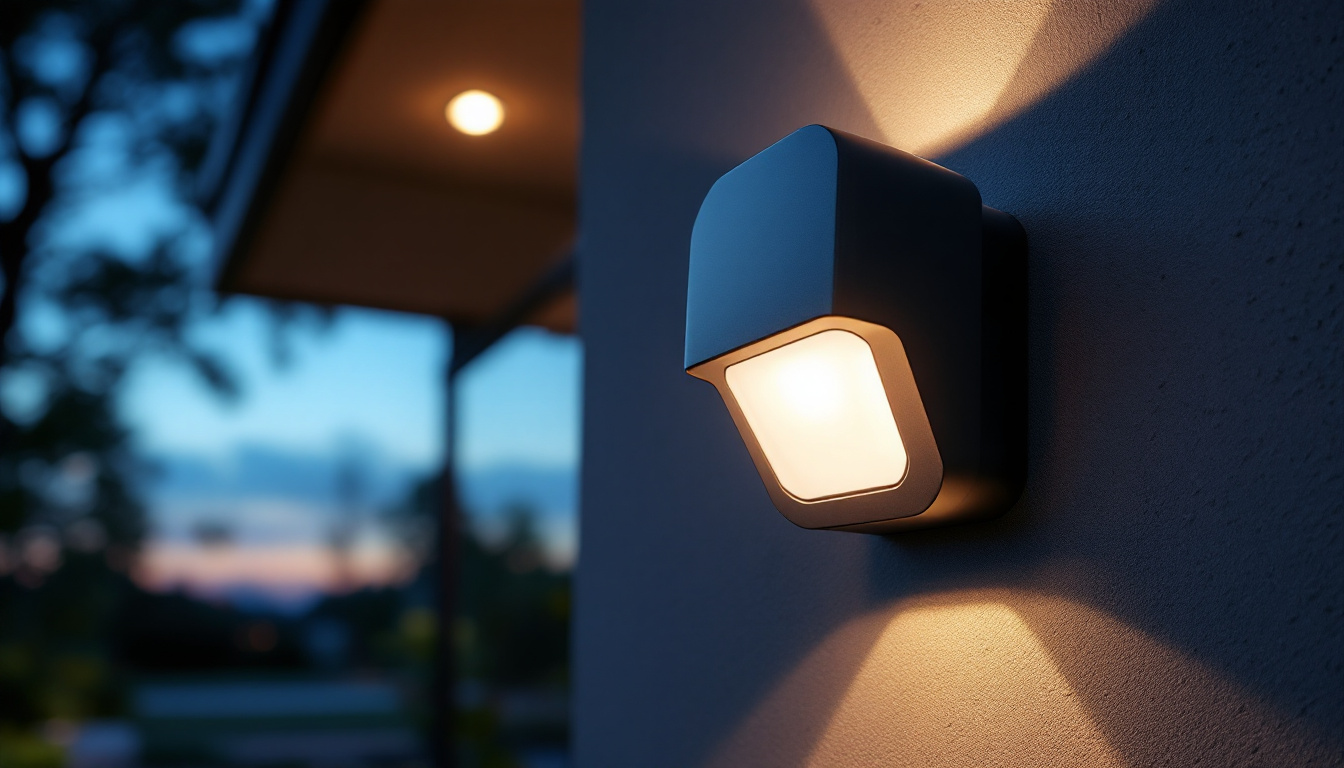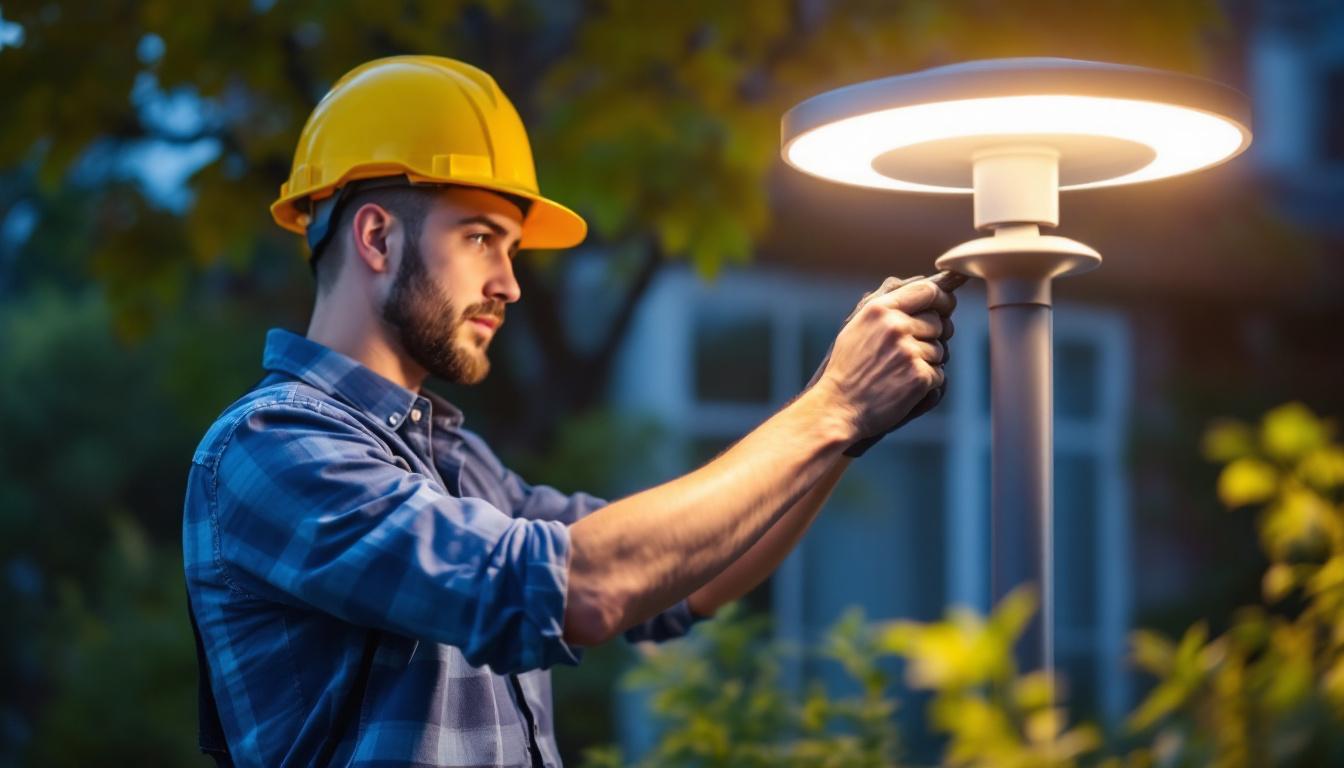
Lighting contractors play a crucial role in enhancing the safety and aesthetic appeal of residential and commercial spaces. One often overlooked area that requires careful attention is the basement stairwell. Proper lighting in these spaces not only ensures safety but also contributes to the overall ambiance of the environment. This guide aims to provide lighting contractors with comprehensive insights into the best practices, design considerations, and installation techniques for basement stairwell lighting.
Stairwells are transitional spaces that connect different levels of a building. In basements, where natural light is typically scarce, effective lighting becomes even more critical. Poorly lit stairwells can lead to accidents, making it essential for lighting contractors to prioritize safety in their designs.
Moreover, well-designed lighting can enhance the aesthetic appeal of a basement, making it feel more inviting. This is particularly important in residential settings where homeowners may use basements for various activities, from storage to entertainment. Understanding the dual role of stairwell lighting—safety and aesthetics—is vital for any lighting contractor.
Safety is the primary concern when it comes to stairwell lighting. The risk of slips, trips, and falls increases significantly in poorly lit areas. Adequate illumination helps in clearly defining the steps, making them more visible and reducing the likelihood of accidents. Lighting contractors should consider using fixtures that provide uniform light distribution to eliminate shadows and dark spots.
Additionally, incorporating motion sensors can enhance safety by ensuring that lights turn on automatically when someone approaches the stairwell. This feature is especially useful in residential settings where family members may frequently access the basement at different times. Furthermore, using LED lights can be beneficial, as they not only consume less energy but also have a longer lifespan, reducing the need for frequent replacements and ensuring that safety measures remain consistently in place.
While safety is paramount, the aesthetic aspect of stairwell lighting should not be overlooked. A well-lit stairwell can serve as a focal point in a basement, adding character and warmth to the space. Lighting contractors should explore various design options, such as recessed lighting, wall sconces, and pendant fixtures, to create a visually appealing environment.
Using dimmable lights can also provide flexibility, allowing homeowners to adjust the brightness according to their needs. This adaptability can transform a functional space into a cozy and inviting area, perfect for gatherings or quiet evenings. Additionally, incorporating decorative elements such as colored LED strips along the edges of the stairs can create a stunning visual effect, enhancing the overall ambiance while also serving a practical purpose. By blending functionality with creativity, stairwell lighting can significantly elevate the overall design of a basement.
Choosing the right type of lighting fixture is crucial for achieving both safety and aesthetic goals in basement stairwells. There are several options available, each with its unique advantages and applications.
Recessed lighting is a popular choice for stairwells due to its sleek design and ability to provide even illumination. These fixtures are installed into the ceiling, creating a clean and unobtrusive look. They can be strategically placed to highlight the stairs and eliminate shadows, enhancing visibility.
When selecting recessed lights, it is essential to consider the beam angle and lumen output. A wider beam angle can help distribute light more evenly, while higher lumen output ensures sufficient brightness for safety.
Wall sconces offer both functional and decorative benefits. They can be mounted on the walls alongside the staircase, providing additional light while also serving as a design element. Sconces come in various styles, from modern to traditional, allowing contractors to match the lighting to the overall decor of the basement.
In terms of placement, sconces should be positioned at eye level to maximize their effectiveness. This height not only provides adequate illumination but also minimizes glare, creating a more comfortable experience for users.
Pendant lights can add a touch of elegance to a basement stairwell. These fixtures hang from the ceiling and can be used to create a dramatic effect. When choosing pendant lights, it is essential to ensure that they are hung at an appropriate height to avoid obstructing movement.
Using multiple pendant lights can create a layered lighting effect, enhancing both safety and aesthetics. However, contractors should be cautious not to overcrowd the space, as this can lead to a cluttered appearance.
In addition to selecting the right fixtures, employing effective lighting techniques is essential for achieving optimal results in basement stairwells. Here are some techniques that lighting contractors should consider.
Layered lighting involves combining different types of lighting—ambient, task, and accent—to create a well-balanced environment. In a stairwell, ambient lighting provides general illumination, while task lighting focuses on specific areas, such as the steps themselves. Accent lighting can highlight architectural features or artwork, adding visual interest.
By layering these lighting types, contractors can ensure that the stairwell is both functional and visually appealing. This technique allows for greater flexibility in design and can cater to various activities taking place in the basement.
The color temperature of lighting plays a significant role in the overall atmosphere of a space. Warmer color temperatures (around 2700K to 3000K) create a cozy and inviting ambiance, making them ideal for residential basements. On the other hand, cooler temperatures (above 4000K) can provide a more energetic and alert environment, suitable for commercial spaces.
Lighting contractors should consider the intended use of the basement when selecting color temperatures. For example, a basement used for relaxation and entertainment may benefit from warmer lighting, while a home gym may require cooler, more energizing light.
Incorporating smart lighting solutions can enhance the functionality of basement stairwell lighting. Smart systems allow users to control lighting remotely through smartphones or voice commands, providing convenience and accessibility. Features such as scheduling and dimming can further enhance the user experience.
Moreover, integrating smart sensors can help reduce energy consumption by ensuring that lights are only on when needed. This not only saves energy but also extends the lifespan of the fixtures, making it a cost-effective solution for homeowners.
Proper installation is key to ensuring that basement stairwell lighting functions effectively and safely. Lighting contractors should adhere to best practices to achieve optimal results.
Before installation, it is crucial to plan the layout of the lighting fixtures carefully. This involves assessing the size and shape of the stairwell, as well as considering any architectural features that may impact lighting placement. A well-thought-out layout can help ensure even illumination and minimize shadows.
Contractors should also take into account the height of the ceiling and the width of the stairs when determining fixture placement. This attention to detail can greatly enhance the overall effectiveness of the lighting design.
Safety is paramount when working with electrical systems. Contractors should ensure that all wiring is up to code and that fixtures are installed correctly to prevent hazards. It is advisable to use fixtures that are rated for damp or wet locations, especially in basements where moisture can be an issue.
Additionally, using LED fixtures can provide energy efficiency and longevity, reducing the need for frequent replacements. Properly sizing circuit breakers and ensuring adequate power supply are also critical components of a safe installation.
After installation, it is essential to test the lighting to ensure that it meets the desired standards. This includes checking for even illumination, verifying that all fixtures are functioning correctly, and making any necessary adjustments to brightness or positioning.
Contractors should also encourage homeowners to provide feedback on the lighting. This input can be invaluable for making final adjustments and ensuring that the lighting meets the needs of the users.
Once the lighting system is installed, ongoing maintenance is crucial for ensuring its longevity and effectiveness. Lighting contractors should educate homeowners about the importance of regular upkeep.
Dust and debris can accumulate on light fixtures, diminishing their effectiveness over time. Regular cleaning is essential to maintain optimal brightness. Homeowners should be advised to clean fixtures periodically, using appropriate cleaning solutions that do not damage the materials.
In addition to cleaning the fixtures, it is also important to check for any signs of wear or damage. Promptly addressing any issues can prevent further complications down the line.
For fixtures that use replaceable bulbs, it is essential to monitor their lifespan and replace them as needed. LED bulbs, while longer-lasting, still have a finite lifespan and should be replaced when they begin to dim or flicker.
Contractors can provide homeowners with guidelines on when to replace bulbs and recommend energy-efficient options that align with their lighting goals.
Basement stairwell lighting is a critical aspect of any lighting project, combining safety and aesthetics to create an inviting environment. By understanding the importance of effective lighting, selecting the right fixtures, employing appropriate techniques, and adhering to best installation practices, lighting contractors can significantly enhance the functionality and appeal of basement stairwells.
As the demand for well-designed lighting solutions continues to grow, staying informed about the latest trends and technologies will enable contractors to provide exceptional service and meet the evolving needs of their clients. With careful planning and execution, basement stairwell lighting can transform a simple passageway into a beautifully illuminated space that enhances safety and elevates the overall atmosphere of the basement.
Ready to elevate your basement stairwell lighting projects with the finest fixtures on the market? Look no further than LumenWholesale, where we provide lighting contractors with top-quality, spec-grade lighting products at unbeatable wholesale prices. Our extensive selection meets the highest industry standards, ensuring you get reliable, high-performance lighting for every project. Plus, with free shipping on bulk purchases, you can secure premium lighting at the best value — without hidden fees or compromises. Choose LumenWholesale for the perfect blend of quality, affordability, and convenience, and light up your next project with confidence.

Discover how exterior light motion sensors are revolutionizing modern lighting solutions by enhancing security, energy efficiency, and convenience.

Discover the pivotal role of LED post lamps in modern lighting projects.

Discover how commercial lighting solutions can transform your projects by boosting efficiency and reducing costs.

Discover innovative strategies employed by smart lighting contractors in the realm of solar-powered illumination.